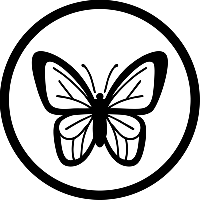Monarda, Hybrid Beebalm 'Sugar Buzz® Bubblegum'




Out of stock
Coming soon, still growing- Sun Preference
- Full-Sun, Part-Sun
- Bloom Time
- July, August, September
Description
Intermediate sized cultivar with amazing flower potential. Hot pink flowers smother the dark green foliage. Good disease resistance.
Minnesota's Largest Selection of Perennials
Discover an unparalleled selection of perennials at Gertens! With the largest variety in Minnesota, we offer endless options of colorful perennials, natives, and pollinator plants to beautify your garden year after year. From vibrant flowers to lush foliage, our perennials are perfect for adding beauty and charm to your outdoor space. Visit Gertens today and see why we're known as Minnesota's Destination Garden Center!
Details
Sugar Buzz® Bubblegum Blast Beebalm | Monarda 'Bubblegum Blast'
Height: 26 inches
Spacing: 28 inches
Sunlight: full sun to part shade
Hardiness Zone: 4a
Other Names: Bergamot, Oswego Tea
Group/Class: Sugar Buzz® Series
Description:
This variety forms a dense mound of hot pink flowers on well branched, strong stems, over lush dark green foliage that has an excellent resistance to powdery mildew; great for massing along borders
Ornamental Features
Sugar Buzz® Bubblegum Blast Beebalm has masses of beautiful clusters of fragrant hot pink pincushion flowers with dark red eyes at the ends of the stems from mid summer to early fall, which are most effective when planted in groupings. The flowers are excellent for cutting. Its fragrant pointy leaves remain dark green in color throughout the season.
Landscape Attributes
Sugar Buzz® Bubblegum Blast Beebalm is an herbaceous perennial with a mounded form. Its medium texture blends into the garden, but can always be balanced by a couple of finer or coarser plants for an effective composition.
This plant will require occasional maintenance and upkeep, and should be cut back in late fall in preparation for winter. It is a good choice for attracting bees, butterflies and hummingbirds to your yard, but is not particularly attractive to deer who tend to leave it alone in favor of tastier treats. Gardeners should be aware of the following characteristic(s) that may warrant special consideration;
- Spreading
- Self-Seeding
Sugar Buzz® Bubblegum Blast Beebalm is recommended for the following landscape applications;
- Mass Planting
- General Garden Use
- Naturalizing And Woodland Gardens
Planting & Growing
Sugar Buzz® Bubblegum Blast Beebalm will grow to be about 20 inches tall at maturity, with a spread of 3 feet. When grown in masses or used as a bedding plant, individual plants should be spaced approximately 28 inches apart. It grows at a fast rate, and under ideal conditions can be expected to live for approximately 5 years. As an herbaceous perennial, this plant will usually die back to the crown each winter, and will regrow from the base each spring. Be careful not to disturb the crown in late winter when it may not be readily seen!
This plant does best in full sun to partial shade. It is very adaptable to both dry and moist locations, and should do just fine under typical garden conditions. It is not particular as to soil type or pH. It is highly tolerant of urban pollution and will even thrive in inner city environments. This particular variety is an interspecific hybrid. It can be propagated by division; however, as a cultivated variety, be aware that it may be subject to certain restrictions or prohibitions on propagation.
More Information
| Common Family Name | Bee Balm |
|---|---|
| Gerten Grown Plants | Gerten Grown Plants |
| Available for Pre-Order | No |
| Sun Preference | Full-Sun, Part-Sun |
| Bloom Time | July, August, September |
| Mature Spread (Range) | 24" - 36" |
| Mature Height (Range) | 13" - 24", 25" - 36" |
| USDA Hardiness Zone | 4, 5, 6, 7, 8 |


